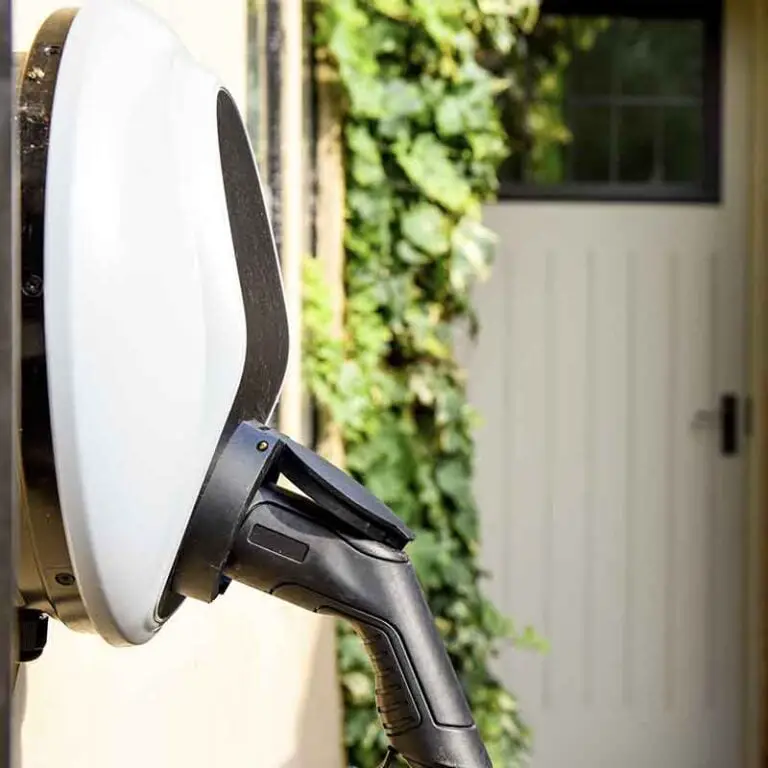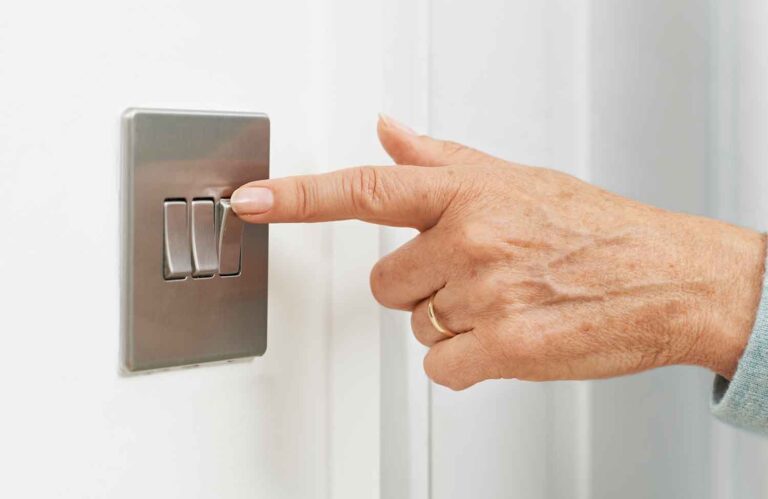Can You Put A Dimmer Switch On Fluorescent Lights?
Fluorescent lights are a popular lighting option due to their energy efficiency and long lifespan. However, one common question arises when it comes to these versatile light sources: can you put a dimmer switch on fluorescent lights? The answer is yes, you can use a dimmer switch with fluorescent lights, but it requires specific equipment and considerations.
Unlike traditional incandescent bulbs, fluorescent lights work by passing a current through a gas inside the bulb, managed by a device called a ballast. To use a dimmer switch with fluorescent lights, you will need a compatible dimmer designed for fluorescent or CFL lights and a dimmable ballast or dimmable bulbs for integrated lights. Before attempting to install a dimmer switch, it is important to ensure that you have the right equipment and that your fluorescent lights are compatible with dimming.
Installing a dimmer switch for fluorescent lights enables you to control the brightness and create custom lighting solutions in your home or office. By understanding the compatibility of dimmer switches with fluorescent lights and taking the necessary precautions, you can enjoy the energy-saving benefits of fluorescent lights while having the flexibility to set the ambiance in any room.
Key Takeaways
- Fluorescent lights can work with dimmer switches, but require specific equipment and considerations
- To use a dimmer switch with fluorescent lights, ensure compatibility with a suitable dimmer and dimmable ballast
- Installing a dimmer switch allows you to control the brightness and create custom lighting environments
Understanding Fluorescent Lights
Fluorescent lights are a popular choice for many spaces due to their energy efficiency and longevity. These types of lights work by passing an electrical current through a gas-filled tube. The interaction between the current and gas produces ultraviolet light, causing the phosphorescent coating on the inside of the tube to glow.
Now, when it comes to dimming fluorescent lights, the process is not as straightforward compared to traditional incandescent bulbs. Unlike incandescent bulbs that can be easily dimmed with a simple dimmer switch, fluorescent lights require specific equipment and compatibility considerations.
Firstly, it is important to have a dimmer switch designed to work with fluorescent or Compact Fluorescent Light (CFL) bulbs. These dimmers are specifically designed to handle the unique electrical characteristics of fluorescent lights. Remember that not all fluorescent lights are compatible with dimming. It is crucial to check the labels on your light bulbs, ballasts, or fixtures to ensure compatibility with dimming.
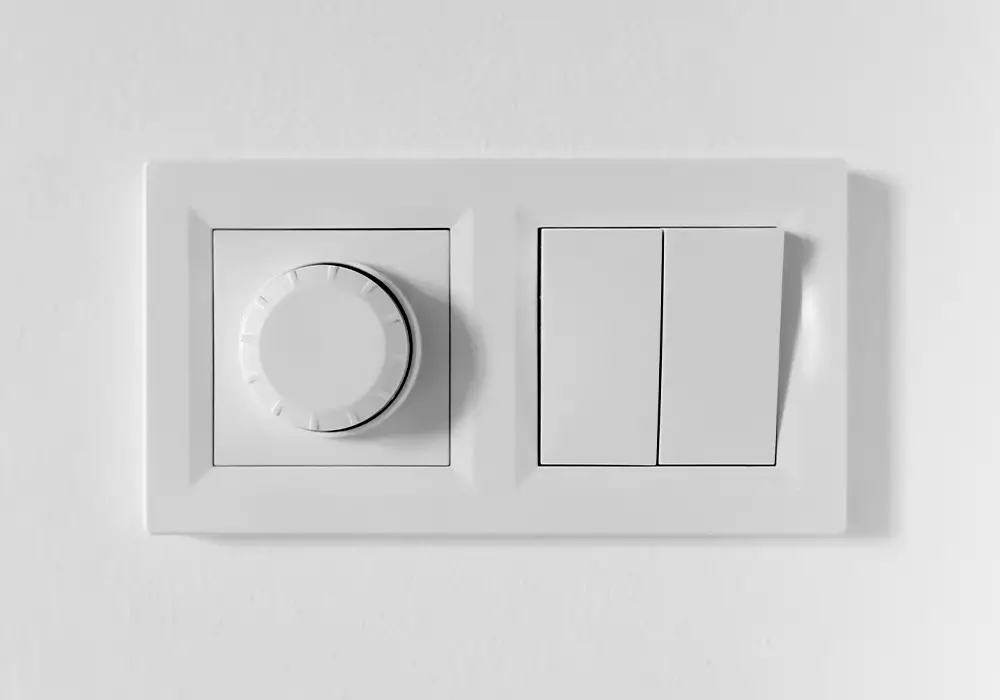
Dimmable ballasts are another crucial component for fluorescent lights. A ballast is a device that regulates the electrical current through the fluorescent tube. Dimmable ballasts allow changes in the amount of current flowing through the lamp, which then adjusts the light output accordingly. It is essential to have a compatible dimmer switch and dimmable ballasts to successfully dim fluorescent lights.
Additionally, some newer integrated LED and CFL lights come with built-in dimming capabilities. These lights will typically mention their compatibility with dimmer switches on the packaging. It is always best to double-check the compatibility and specifications before purchasing or installing any dimming equipment for your fluorescent lighting.
To sum up, it is possible to put a dimmer switch on fluorescent lights, but it requires specific equipment and compatibility considerations. Always ensure that your dimmer switch, ballasts, and light bulbs are all compatible with each other before attempting to install a dimming system for your fluorescent lights.
Concept of Dimmer Switch
A dimmer switch allows you to control the brightness of your fluorescent lights. By adjusting the switch, you can create a softer or more focused lighting environment to suit your needs and preferences. This can be particularly useful in rooms where you may require different levels of lighting throughout the day or for specific tasks.
It is indeed possible to put a dimmer switch on fluorescent lights, but it’s not as straightforward as with other types of bulbs, such as incandescent or LED lights. Fluorescent lights work by passing a current through a gas inside the bulb, which is managed by a device called a ballast. To successfully install a dimmer switch, the right equipment and some specific considerations are needed.
Firstly, ensure you have a compatible dimmer switch that is designed for fluorescent lights or CFL bulbs. This will help prevent any issues or damage to the lighting fixture. Secondly, you’ll need a dimmable ballast or dimmable bulbs for integrated lights. This is crucial, as not all ballasts are designed to work with dimmer switches, and attempting to use a non-dimmable ballast could lead to the switch’s failure or even create a potential hazard.
In summary, installing a dimmer switch for fluorescent lights is possible with the appropriate equipment, including a suitable dimmer switch and compatible dimmable ballast or bulbs. By choosing the right components and following the correct installation procedures, you can achieve greater control over your lighting environment and create a more comfortable and versatile space.
Compatibility of Dimmer Switch with Fluorescent Lights
When considering the addition of a dimmer switch to your fluorescent lights, it’s essential to understand whether the equipment is compatible. Fluorescent lights can indeed be used with a dimmer switch, but some requirements need to be met for this to work effectively.
First and foremost, to achieve dimming with fluorescent lights, you should ensure that you have a compatible dimmer switch designed for fluorescent or CFL (Compact Fluorescent Lamp) lights. These specially designed dimmers can handle the properties of fluorescent lights, providing smooth dimming without flickering or other performance issues.
In addition to the dimmer switch, it’s crucial to have a dimmable ballast if you’re using traditional tube-style fluorescent lights. The ballast is responsible for regulating current and providing the proper voltage required for your fluorescent lights to function correctly. However, not all ballasts are suitable for dimming, so ensure that you purchase one specifically designed to work with dimmers.
For integrated CFL bulbs, opt for dimmable bulbs that are specifically engineered to be used with dimmer switches. Using non-dimmable CFL bulbs with a dimmer switch may lead to poor performance and possibly damage to your lighting system.
To sum up, it is possible to add a dimmer switch to your fluorescent lights as long as you take the necessary precautions and use the right equipment. Ensure you have a compatible dimmer switch, a dimmable ballast if needed, and dimmable bulbs for integrated lights. By meeting these requirements, you can enjoy the benefits of adjustable lighting levels from your fluorescent lighting system.
Dangers of Using a Dimmer Switch with Fluorescent Lights
While it is possible to use a dimmer switch with fluorescent lights, you must be aware of the potential dangers that can occur if the process is not done correctly. Using incompatible hardware or not having the correct equipment can lead to flickering, reduced lifespan of the lights, potential fire hazards, and even damage to the lighting system.
Firstly, the ballast plays a critical role in dimming fluorescent lights. If you use a regular dimmer switch with a traditional ballast, the lights will likely flicker or not work at all. To avoid this issue, it’s necessary to use a specialised dimmable ballast along with the appropriate dimmer switch compatible with fluorescent lights. This combination ensures smooth and safe operation.
Moreover, using an incorrect dimmer switch on fluorescent lights can cause them to age prematurely. If the lights are frequently subjected to flickering or inconsistent current supply, their lifespan will be significantly reduced, leading to more frequent replacements and increased costs.
It’s essential to acknowledge that incorrect installation of a dimmer switch with fluorescent lights can also pose a fire hazard. If inappropriate electrical components are used or the wiring is not done correctly, there is a risk of overheating or electrical shorts in the system, which can lead to fires.
One more important factor to consider is the possibility of damage to the lighting system itself. Insufficient or improper use of equipment can lead to malfunctions in the electrical circuit, causing damage to light fixtures, ballasts, and other crucial components of the system.
To summarise, while you can put a dimmer switch on fluorescent lights, it’s vital to use appropriate equipment and take necessary precautions to ensure safe and effective operation. Failure to do so may lead to flickering, reduced lifespan, potential fire hazards, and damage to the lighting system.
Alternatives to Dimming Fluorescent Lights
If you’re unable to use a dimmer switch with your fluorescent lights or don’t find it practical, there are alternative ways to achieve the desired lighting effect. These alternatives can offer increased flexibility and control without the complexities of installing dimmer switches and compatible ballasts.
One popular solution is to replace your existing fluorescent light bulbs with LED lights. LED lights are energy-efficient, have a longer lifespan, and many are compatible with dimmer switches. This makes them an ideal choice for those looking to create a customisable lighting environment. Moreover, LED lights are available in various colour temperatures and are easy to install, which may suit your needs better than dimming fluorescent lights.
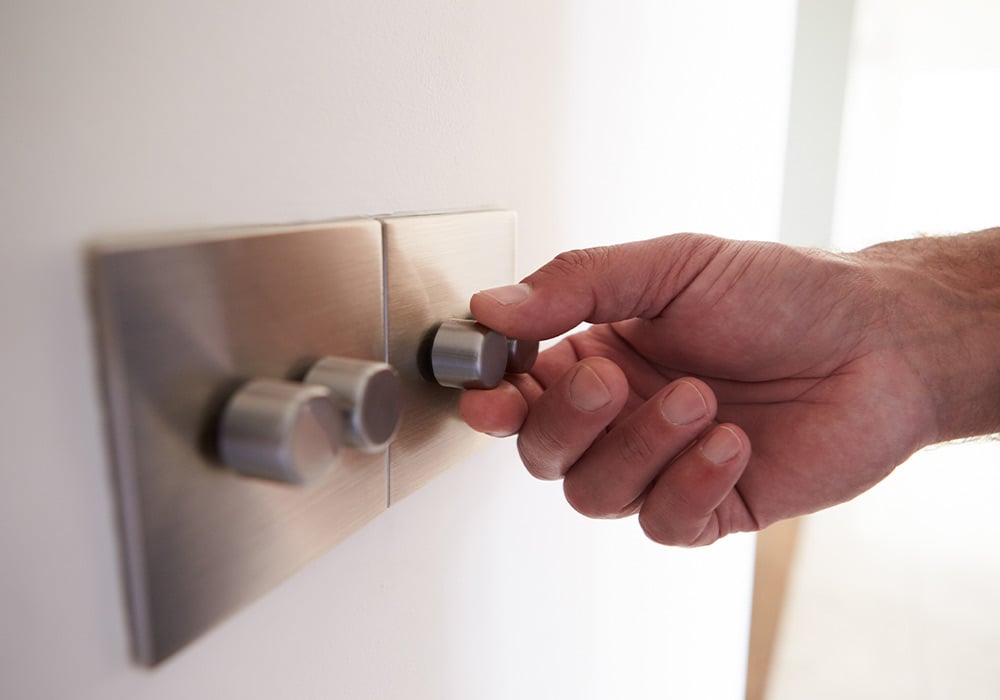
Another option to consider is adjustable light fixtures. Utilising these fixtures enables you to direct the light onto specific areas or surfaces, which can help create different lighting levels and visual interest in a space. You can also adjust the angles and positioning of the fixtures to create the ideal lighting arrangement without needing to reduce the intensity of the bulbs themselves.
In addition, layering light sources is a practical alternative to using a single, dimmable light source. This involves having multiple sources of light, such as table lamps, wall sconces, and floor lamps. By using several light sources, you can control the intensity and direction of the light to create a more comfortable and visually appealing environment. This method allows you to customise the lighting without needing to dim any single source.
Lastly, investing in smart lighting systems can provide greater control over the brightness and colour temperature of your lights. These systems can connect to your home network and smart devices, enabling you to adjust settings via an app or voice commands. With smart lighting, you can easily regulate the lighting of your living space without the need for a dimmer switch on fluorescent lights.
Choosing the Right Lighting Option
When deciding whether to install a dimmer switch for your fluorescent lights, it’s essential to choose the right components to ensure a successful set up. As fluorescent lights are different from traditional incandescent bulbs, they require specific equipment to be dimmed.
Firstly, you need a compatible dimmer switch designed for fluorescent or CFL lights. You may find dimmer switches with intelligent dimming technology, soft start, intelligent overload protection, and adjustable minimum brightness setting. These features can provide a high level of control over your lighting system, allowing you to adjust the intensity to your preference.
Secondly, invest in a dimmable ballast or dimmable bulbs for integrated lights. Fluorescent lights function by passing a current through a gas inside the bulb, managed by a device called a ballast. Using a dimmable ballast allows the current to be regulated, enabling the lights to be dimmable. In the case of integrated lights, opt for dimmable bulbs to ensure compatibility with the dimmer switch.
When planning to dim fluorescent light bulbs, it is crucial to choose high-quality equipment to avoid poor performance or potential malfunction. Consider looking for well-reviewed lighting options, or seeking advice from a professional to ensure the right choice.
Installing a dimmer switch for fluorescent lights can improve the atmosphere of your environment, giving you more control over your lighting system. By selecting the appropriate components, you can safely and successfully create a customisable lighting solution that works for your space.
How to Install a Dimmable Switch
To install a dimmer switch with a fluorescent light, the first thing you need to do is to ensure you have a fixture and dimming control that is compatible with the bulb. Remember, a fluorescent bulb and a CFL bulb are two different types of fluorescent bulbs, but both require special treatment when attaching a dimmer switch.
Before you begin, gather all the necessary tools and materials. You will need a compatible dimmer switch, screwdriver, wire stripper, wire nuts, and a voltage tester. Additionally, make sure to follow safety precautions by switching off the electricity at the fuse box or circuit breaker.
Next, remove the existing light switch by unscrewing the switch plate. Carefully pull out the switch to reveal the wiring. Use a voltage tester to confirm there is no current running in the wiring. Identify the live, neutral, and earth wires (Live: brown, Neutral: blue, and Earth: green/yellow in the UK).
Now, connect the wires to the dimmer switch. Typically, the live wire connects to the common terminal (COM), while the two blue wires connect to the L1 and L2 terminals. In some cases, there may be an earth wire; connect this to the earth terminal, usually marked with a green or yellow symbol.
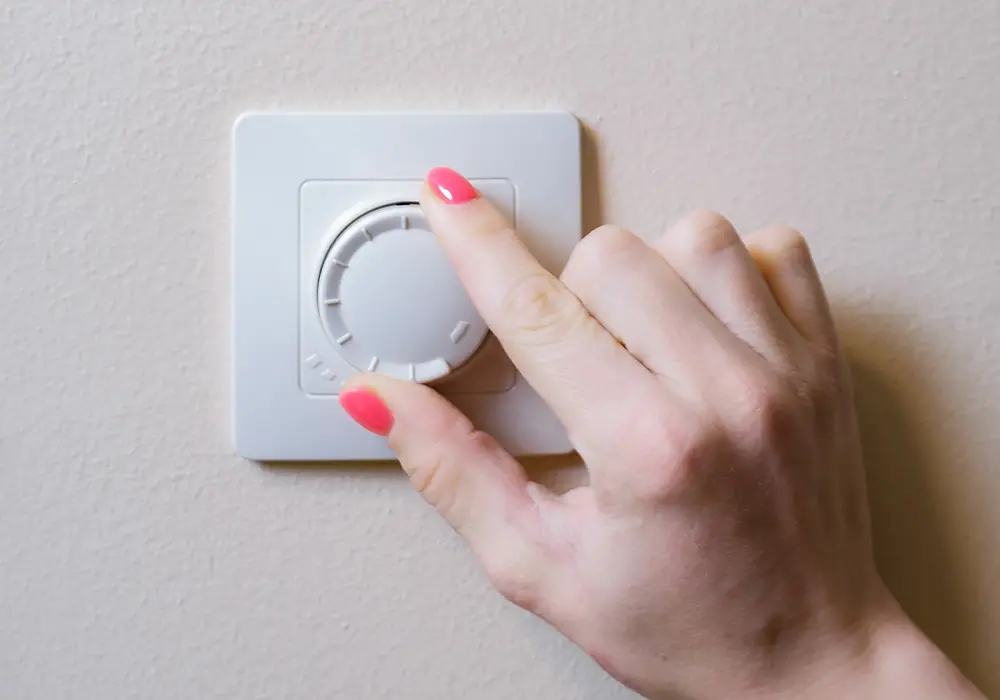
Carefully tuck the wires back into the switch box and screw the dimmer switch in place. Attach the dimmer switch cover or faceplate. Restore power at the fuse box or circuit breaker and test the dimmer switch to ensure the brightness of the fluorescent light can be adjusted as desired.
Remember that not all fluorescent lights are dimmable, so always check the manufacturer’s guidelines and ensure the dimmer switch is compatible with your specific bulb type. Stick to the wiring colour codes and follow the manufacturer’s instructions when installing a dimmer switch to ensure safety and proper functionality.
Maintenance of Dimmable Fluorescent Lights
Maintaining your dimmable fluorescent lights is essential for their longevity and proper functioning. In this section, we will discuss some of the crucial aspects of maintaining such lights.
Firstly, it’s important to clean your fluorescent lights regularly. Dust and dirt can accumulate on the bulbs, reducing their efficiency and light output. To clean them, simply turn off the power at the main switch, and use a soft, damp cloth to gently wipe the bulbs. Be cautious not to use any abrasive materials, as these can damage the bulb’s surface.
Another essential aspect of maintaining dimmable fluorescent lights is to ensure that you are using compatible dimmer switches, as well as dimmable ballasts or bulbs. Make a habit of checking the compatibility of your equipment regularly, as using mismatched components can lead to flickering or poor dimming performance. When purchasing new dimmer switches, ballasts or bulbs, always check their compatibility with the existing components.
Additionally, it’s crucial to inspect your dimmable fluorescent lights for any signs of wear and tear. Look out for any blackening at the ends of the tubes, as this is a sign that the bulbs may need replacement. If you notice flickering or inconsistent dimming, it could indicate a problem with the ballast or the dimmer switch. In such cases, consulting a professional electrician is recommended to diagnose and solve the issue.
Lastly, consider the longevity of your fluorescent lights. While fluorescent lights generally have a longer lifespan compared to incandescent bulbs, it’s still important to keep track of when they were last replaced. This will help you plan for timely replacements and avoid any sudden disruptions in lighting.
By following these simple maintenance tips, you can ensure that your dimmable fluorescent lights function optimally and last for an extended period.
FAQs on Fluorescent Lights and Dimmer Switch
Can you put a dimmer switch on fluorescent lights?
Yes, you can put a dimmer switch on fluorescent lights, but with some stipulations. You will need a compatible dimmer designed for fluorescent or CFL lights, a dimmable ballast or dimmable bulbs for integrated lights.
What equipment do you need to install a dimmer switch for fluorescent light bulbs?
To successfully install a dimmer switch for fluorescent light bulbs, you need the following equipment:
- A good-quality dimmer switch compatible with fluorescent lights
- A dimmable ballast or dimmable bulbs for integrated lights
- A suitable cable for connecting the dimmer switch
Can you replace any switch with a dimmer?
In general, light switches can be swapped out for dimmers in most circumstances. However, there are certain considerations and exceptions to understand before making the change. For example, the light bulb being controlled must also be dimmable for the dimmer switch to work effectively.
Do all fluorescent lights work with dimmer switches?
Not all fluorescent lights can be easily dimmed. To work with a dimmer switch, you need:
- A dimmable fluorescent light bulb or tube
- A dimmable ballast if the light fixture uses a separate ballast
- A compatible dimmer switch designed for use with fluorescent lights
Make sure to verify that your light bulbs, ballast, and dimmer switch are all compatible before attempting to install the dimmer switch.
Can you use other types of light bulbs with a fluorescent light dimmer switch?
It is essential to use the appropriate dimmer switch for different types of light bulbs. While some dimmer switches may work with multiple bulb types, it is always best to verify compatibility before making any changes. Consult the manufacturer’s recommendations or seek advice from a professional electrician to ensure proper installation and functioning.


